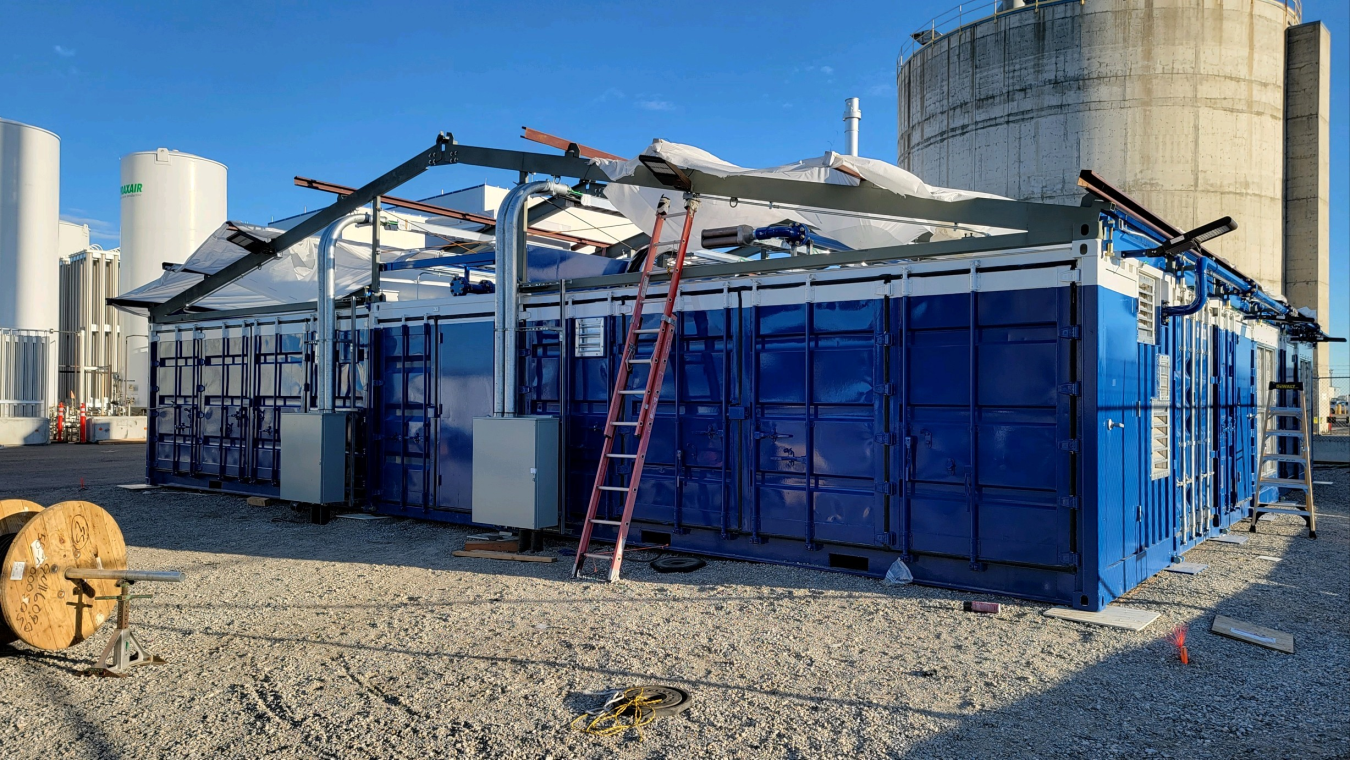When EM's radioactive liquid waste treatment facility at the Idaho National Laboratory Site resumes operations early next year, it will be using nitrogen generated onsite, a reliable source of the gas necessary for mission completion.
Office of Environmental Management
November 21, 2023
IDAHO FALLS, Idaho — When EM's radioactive liquid waste treatment facility at the Idaho National Laboratory Site resumes operations early next year, it will be using nitrogen generated onsite, a reliable source of the gas necessary for mission completion.
Quite simply, the Integrated Waste Treatment Unit (IWTU) cannot run without nitrogen.
During the last year, a host of challenges affected the ability of IWTU to dependably receive daily shipments of the inert gas. Nitrogen is crucial to keeping the billions of tiny beads in the IWTU’s primary reaction vessel moving while liquid waste is injected into the super-heated vessel allowing the liquid to adhere to the beads. Nitrogen is also used to prepare the granulated activated carbon beds — which remove mercury from the treated sodium-bearing liquid waste — for operations, and other plant functions.
IWTU now has a turnkey, commercial nitrogen gas generator source, next to the facility, which will reliably provide the millions of cubic feet of high-purity nitrogen that the facility uses weekly during operations. Nitrogen is generated by simply separating the gas from ambient air.
“Having nitrogen generation right next to the plant allows us to have a constant, real-time supply of this gas for reliable, steady-state operations,” said Bill Kirby, senior director for liquid waste and fuels with EM cleanup contractor Idaho Environmental Coalition.
The new electric motor-driven system not only resolves the challenges of relying on offsite sources for nitrogen, it also is significantly more environmentally friendly. During its peak usage during startup and shutdown, IWTU required as many as four tanker-truck loads of nitrogen delivered daily. The switch to an onsite nitrogen source not only eliminates carbon monoxide from the diesel trucks delivering the product, but also removes six diesel-powered compressors used in the prior system.
“We have also partnered with a small business to provide the system as well as the maintenance to keep it operational,” said Kirby. “Their level of customer service is consistent with what we’ve noticed with other small businesses we employ to complete the overall cleanup mission in Idaho.”
Following five months of operations, IWTU is in a maintenance phase to replace the carbon in a downstream vessel that removes mercury during the steam-reforming process.
Starting with its launch in April, IWTU has converted more than 68,000 gallons of sodium-bearing waste from nearby underground waste tanks to a safer, granular solid. The treated material, which is about the size of coarse coffee grounds, was transferred to stainless-steel canisters and placed in concrete vaults for onsite storage.
-Contributor: Erik Simpson
To receive the latest news and updates about the Office of Environmental Management, submit your e-mail address.

